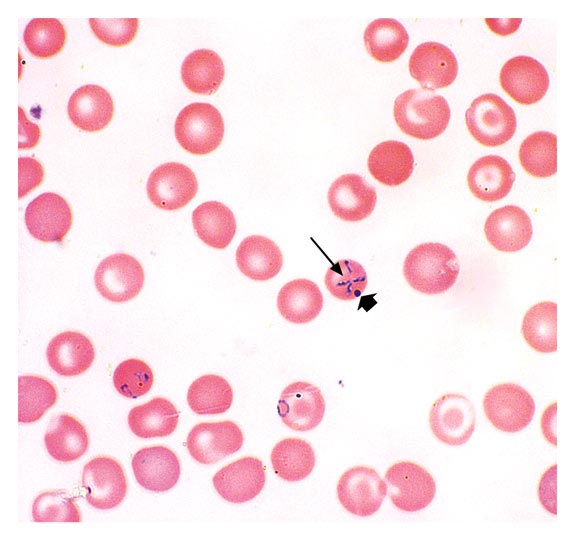ความคิดเห็นทั้งหมด : 2
A 34-year-old man presented with a 3-day history of fevers and shaking chills ชายอายุ 34 ปีมาที่ห้องฉุกเฉินเนื่องจากมีไข้มานาน 3 วัน (ไข้สูงถึง 40°C) ร่วมกับมีหนาวสั่น เมื่อ 12 ปีก่อน เขาได้รับการวินิจฉัยว่าเป็น nodular sclerosing Hodgkins lymphoma, stage IIIB, และได้รับการตัดม้าม ก่อนหน้าไม่สบายครั้งนี้ เขาเดินทางไป Massachusetts, Oregon, Hawaii, Florida, และ Illinois และไป South Africa และ Costa Rica. Laboratory tests revealed a hemolytic anemia, with a hemoglobin level of 8.6 g/dL The peripheral-blood smear shows numerous intracellular organisms in red blood cells, with nearly 3% of erythrocytes harboring these organisms (รูป A) 1. การวินิจฉัยคือ...................................................... 2. จะ manage อย่างไร Posted by : chpantip , E-mail : (chpantip@medicine.psu.ac.th) , Date : 2009-08-17 , Time : 10:01:30 , From IP : 172.29.3.68 |